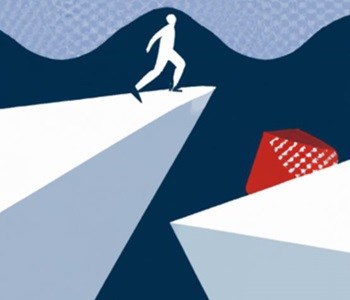No Safe Harbor
Michael Harris-Love Feb 3, 2023
No Safe Harbor
There’s little debate about the notion that mutual respect and cordial relations are reasonable expectations in professional settings. Moreover, employees, trainees, and students shouldn’t be maligned for seeking work or school environments free from prejudice or malice. Nonetheless, navigating the uneven progress regarding discrimination in the workplace and academe remains challenging. This uneven progress has been documented many times over from Joan Williams’ treatise regarding gender inequality and the myth of the “ideal worker”, and the seminal work of Zweigenhaft and Domhoff on Black students at elite academic institutions, to the recent publications by my colleagues, Rennison and Bonomi, concerning the barriers experienced by women in academia.
Indeed, the effort to maintain dignity in the face of a slight by a co-worker or corporate maleficence directed at one’s personal characteristics has resulted in calls for “safe spaces.” Despite the worthiness of this ideal, I am uncertain if such spaces can exist in any concrete way. The idea of a safe space suggests that individuals or groups may inhabit a place where they can express themselves and discuss sensitive topics without fear of incurring emotional pain, harassment, or retaliation. However, for many, these wellsprings of equanimity are lacking even among friends, families, and social circles, let alone the workplace. Pitfalls hide within every sentiment and verbal exchange, and between every interaction that involves the gathering of two or more people. Personal relationships are not safe because they require vulnerability. Professional relationships are not safe because institutions, and the people who prop them up, are imperfect and driven by interests which may differ from your own.
The work concerning discrimination is a series of tasks with no respite. The notion that a group of people within the greater society may cross a finish line to attain equal rights or a guarantee of decency from others is farcical. Respect and rights are not things to attain, but rather a state of existence that must be constantly maintained and vigilantly safeguarded. There are no laurels on which to rest.

History teaches us that our journey is uphill and that risk is our constant companion. However, the path we endure today benefits those who will invariably follow. To wait in quiet dignity at the lunch counter amid the taunts, to sit at the front of the bus to rest tired feet and a weary soul, to ascend the mountainous steps of Little Rock High, to leave with your life if you dare to cross Edmund Pettus Bridge. This is not to suggest that current efforts to address microaggressions and workplace equity issues are akin to the monumental sacrifices of the U.S. civil rights movement in the early to mid-20th century. Nevertheless, we are standing on a platform that was built by the civil rights icons and everyday heroes of the era. Their actions serve to remind us that facing down discrimination demands our engagement and not our retreat. They ran into the fire so we can now inhabit the buildings that educate the young, heal the sick, and house those living within our communities. We should not be so easily moved now.
Perhaps what we really seek to create are “brave spaces.” The construct of brave spaces has been centered around fostering dialogue, building mutual respect, and being intentional in the creation of inclusive work environments. In time, a more expansive application of the brave space concept may engender a spirit of resiliency, reflection, and response when we encounter animus in the places where we learn and work. Just as the Highlander Folk School trained community organizers and civil rights activists of days past to become comfortable with being uncomfortable, today’s generation can meet our current challenges with resolve. Safety in any setting has always been the product of preparation, readiness, sacrifice, and yes, bravery. Our ability to thrive will not come from the absence of threats, but rather our ability to advance our cause and stand tall come what may.
Notes:
Rennison, C.M. and Bonomi, A. eds., 2020. Women leading change in academia: Breaking the glass ceiling, cliff, and slipper. Cognella.
Williams, J., Boyle, J., Davis, A., Ertman, M., Polikoff, N., Silbaugh, K., White, L., Carle, S. and Volpp, L., 2000. Unbending gender: Why work and family conflict and what to do about it. American University Law Review, 49.
Williams, J., 2013. Eyes on the prize: America's civil rights years, 1954-1965. Penguin.
Zweigenhaft, R.L. and Domhoff, G.W., 1993. Blacks in the white establishment?: A study of race and class in America. Yale University Press.
